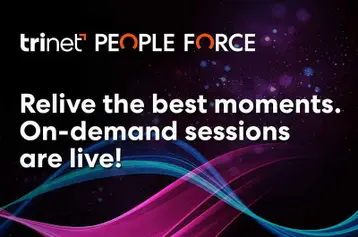10 Ways to Make a Hybrid Work Environment More Inclusive

Table of contents
- 1.Why inclusivity is right for all work environments
- 2.How to implement inclusivity: 10 strategies and tips
- 3.Invest in a remote-forward workspace
- 4.Don’t settle into any definition of flexibility
- 5.Train legacy management on how to operate in a hybrid environment
- 6.Lead by example
- 7.Don’t forget about your remote employees
- 8.Communicate your goals
- 9.Implement inclusion practices
- 10.Encourage employee resource groups
- 11.Reevaluate your hiring practices
- 12.Build trust
- 13.Get everyone on board to make a hybrid work environment inclusive
While remote work and hybrid workdays used to be a unique benefit, the 2020s have made this style nearly mandatory for most job seekers and employees. According to a 2022 McKinsey report, 75% of employees say they see hybrid working as a long-term preference, whereas only 25% say they prefer to work in the office full-time. Who prefers hybrid work the most? Groups include the LGBTQ community, non-binary people, women, and BIPOC individuals. Let’s explore why you should strengthen your hybrid inclusivity environment, and steps on how to go about it that can benefit all types of workers.
Why inclusivity is right for all work environments
Great Place to Work found that diversity and inclusion (D&I) is an incredible way to continue to thrive despite economic implications. Diversity widens your applicant pool to incredible talent from all backgrounds and identities. You have the chance to hear new ways of approaching problems with unique solution perspectives. Representation in the workplace is also essential. Your new hires can feel comfortable and confident reaching for career advancement, when the people in C-suite positions represent them. A 2021 Future Forum report found 5 positive outcomes for companies that offer hybrid work environments:
- Improved work-life balance: Employees have the chance to better align their everyday and work lives when they have a hybrid or remote option available.
- Sense of belonging: Hybrid offices offer employees a greater sense of companionship, value, and acceptance by others on their team.
- Productivity: Employees have the chance to work at a pace that makes sense for them when they have the chance to work in a hybrid environment.
- Satisfaction in their working environment: Overall, the hybrid workforce has a better outlook on their job based on their perceived infrastructure support.
- Managed work-related stress: Business hires can better manage their work-related stress and anxiety with a hybrid work structure.
Despite these benefits, improving your inclusivity practices in a hybrid workspace can feel daunting. It could involve deep system shifts from company beliefs to culture and day-to-day interaction protocols. Let’s jump into 10 different ways you can implement a more inclusive work environment for your hybrid workforce.
How to implement inclusivity: 10 strategies and tips
Whether you’re just getting started on your inclusivity journey for your business, a seasoned professional, or somewhere in between, it never hurts to learn new strategies for hiring, and engaging a more diverse group of workers. In the McKinsey report mentioned above, an inclusive work environment increases retention rates by 47% and inter-team collaboration and support by 90%. So, if you’re ready to improve your business overall, here are 10 tips to make your hybrid work environment more inclusive.
1. Invest in a remote-forward workspace
Employees who work remotely still want to feel included in the wins and losses of the company just as much as in-office workers.
Look for ways to keep your remote employees engaged without overwhelming them with micromanagement.
New tech tools that measure productivity or can engage employees during a work call using multimedia can be a huge advantage. Look for ways to keep your remote employees engaged without overwhelming them with micromanagement. Explore tools and methods of checking in that work best for each department. What productivity looks like for the design team will not work for measuring productivity on the project management team.
2. Don’t settle into any definition of flexibility
Being flexible for 1 work type but not another can hurt the retention rates you worked so hard to achieve. The beauty of a flexible work environment is that you create trust between your workforce and your management to decide how and when to work while still ensuring the business is flowing in a positive direction. When you let go of what a typical office should look like, you develop a work environment that is loyal and competitive.
3. Train legacy management on how to operate in a hybrid environment
As the market has opened up and new employees are streaming in, it’s important to teach management how to engage remote workers that are working from different time zones. Lead by driving management to create connections across all types of teams. This starts with open communication about why an employee wants to work the days and hours they’ve requested. Maybe they must take their child to daycare on Wednesday mornings, or they’ve found that 1:00 pm yoga on Fridays is the best way to avoid burnout. Remember that the goal is to be supportive and inclusive of your employees’ needs and goals.
4. Lead by example
Once you have your management teams trained on supporting a hybrid work environment, ensure they are leading the rest of the company on these practices as well. Strengthening company culture is only possible when the entire business is on board. Technology, games, and policies help get it started, but it takes every employee being on board to truly make changes.
5. Don’t forget about your remote employees
Workers who are operating from home or remotely, or have chosen to work most of the time from home rather than at the office could potentially be forgotten when it comes time for promotions. Keep an eye on who or what groups of people keep coming up for raises and promotions. Are they primarily full-time office employees? Ensure you are offering the same opportunities for all workers no matter where they work.
6. Communicate your goals
Having a goal of creating an inclusive workspace is spectacular. However, the power of the goal is heightened when you communicate your intentions with your teams. This way, everyone is on board with accomplishing this goal, can hold each other accountable for achieving it, and can take part in implementing it.
7. Implement inclusion practices
In an inclusion practice 2021 survey, McKinsey found that perceived D&I was driven by several factors:
- Self-expression
- Connection opportunities
- Resource accessibility
- Anti-discrimination mechanisms
- Work-life support
- Impartial treatment
- Participative decision-making
- Merit-based rewards
Implementing some or all of these practices can help drive improved employee satisfaction.
8. Encourage employee resource groups
One important part of inclusivity, as we’ve mentioned, is representation. Get your employees involved in resource groups that connect people. There could be a group for employees with ADHD to unwind, or 1 for BIPOC employees to start a book club.
9. Reevaluate your hiring practices
If you’ve noticed there are enough people to create an employee resource group, yet there are no people in management positions that represent these groups, this should indicate that some hiring practices need to shift. Notice where you may be posting your open positions and if diverse groups of people use this medium. You may also consider calling out your goal of diversity and inclusion on your job description. People who are searching for hybrid opportunities that come from under-represented groups may be more likely to apply.
10. Build trust
To talk about diversity and inclusion, you need to demonstrate your efforts as well. Show your employees that you trust they will complete the work they say they will, on time, and within budget by not micromanaging them. Illustrate your efforts to hire diverse groups by updating your company on where you are in your pursuit of this goal. Show hard numbers that tell the story of your company.
Get everyone on board to make a hybrid work environment inclusive
To develop a hybrid work environment that is more inclusive, you need to employ everyone at the company to align with your goals. A diverse team can launch your company to new heights, but each and every person needs to be on board to make it happen.
This article is for informational purposes only, is not legal, tax or accounting advice, and is not an offer to sell, buy or procure insurance. TriNet is the single-employer sponsor of all its benefit plans, which does not include voluntary benefits that are not ERISA-covered group health insurance plans and enrollment is voluntary. Official plan documents always control and TriNet reserves the right to amend the benefit plans or change the offerings and deadlines.
This article may contain hyperlinks to websites operated by parties other than TriNet. Such hyperlinks are provided for reference only. TriNet does not control such web sites and is not responsible for their content. Inclusion of such hyperlinks on TriNet.com does not necessarily imply any endorsement of the material on such websites or association with their operators.

Dan Marzullo
Table of contents
- 1.Why inclusivity is right for all work environments
- 2.How to implement inclusivity: 10 strategies and tips
- 3.Invest in a remote-forward workspace
- 4.Don’t settle into any definition of flexibility
- 5.Train legacy management on how to operate in a hybrid environment
- 6.Lead by example
- 7.Don’t forget about your remote employees
- 8.Communicate your goals
- 9.Implement inclusion practices
- 10.Encourage employee resource groups
- 11.Reevaluate your hiring practices
- 12.Build trust
- 13.Get everyone on board to make a hybrid work environment inclusive




